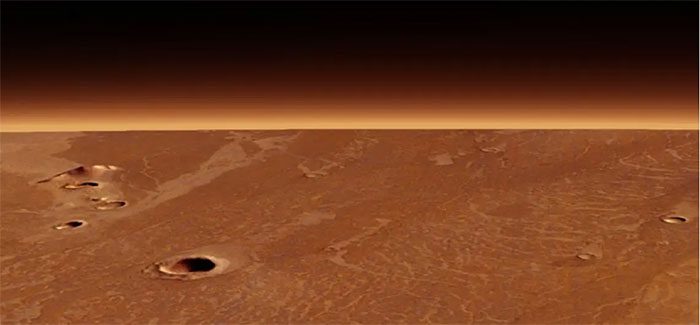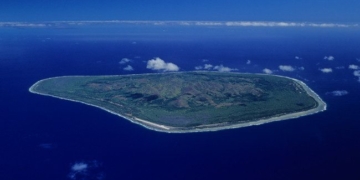The mysterious extraterrestrial region known as Elysium Planitia has been confirmed to contain water, relatively “young” volcanic activity, and possibly even life.
Previously thought to be “lifeless”, Elysium Planitia on Mars has now been suggested to harbor extraterrestrial life based on new analysis from data gathered by the Mars Express orbiter of the European Space Agency (ESA).
This analysis comes from the Lunar and Planetary Laboratory at the University of Arizona (USA). They utilized the ground-penetrating radar of Mars Express to create a 3D model of the lava flows on Elysium Planitia.

Elysium Planitia on Mars may harbor extraterrestrial life – (Image: ESA).
This revealed that the lava in this area is the result of relatively recent eruptions, with the most recent occurring just 1 million years ago. While a million years may seem long to us, it is merely a moment in the history of a planet.
The lava flow has covered an area comparable to the state of Alaska in the USA.
Further analysis identified up to 40 volcanic events contributing to this lava flow. The largest eruption even filled the Athabasca Valles valley with 4,168 km3 of basalt rock.
Volcanic activity and other geological processes play a crucial role in supporting life on Earth, as they help maintain the necessary chemical environment and contribute to stabilizing the lithosphere and climate.
A lack of geological activity is one of the main barriers preventing the Red Planet from being as densely populated with life as Earth, even though it and Venus are also part of the Solar System’s “Goldilocks zone”, just like our world.
Combining data from NASA’s Shallow Radar, the research team found that this chain of volcanic activity has been ongoing for the last 120 million years, coinciding with the peak of the dinosaurs on Earth.
This means that Elysium Planitia could potentially have hosted “ancient” life forms similar to dinosaurs, or even still harbor life forms that existed until recently or even in the present.
Additionally, evidence suggests that Elysium Planitia has also experienced significant liquid water floods that interacted with the lava.
These factors have “sculpted” the bizarre landscape of Elysium Planitia and may have led to the creation of something precious: hydrothermal activity.
On Earth, hydrothermal systems exist on the ocean floor and are believed to be a cradle for life.
The volcanic activity identified by the research team in this region could also bring life-sustaining water to the surface of Mars in two ways.
- First, a massive amount of groundwater could be released alongside volcanic activity.
- Second, water contained within the lava could be ejected into the atmosphere, freeze, and then fall back to the surface as rain, forming ice.
In either case, this water source has created ancient floods that have left marks on the landscape and have the potential to support life.


















































